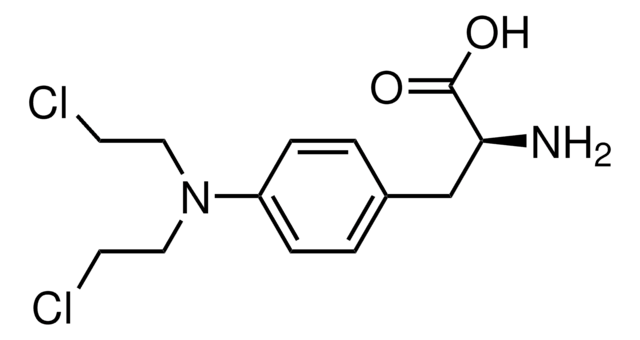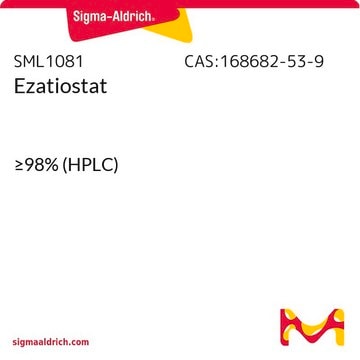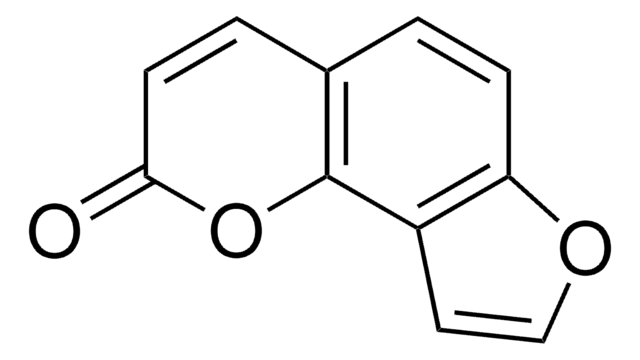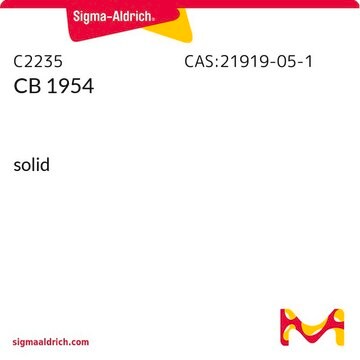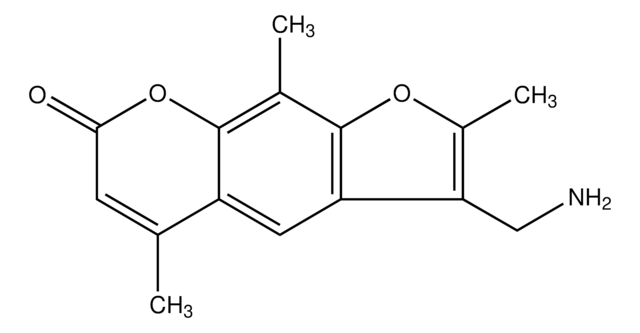Kluczowe dokumenty
C0400
Carmustine
≥98% (TLC), oily liquid to amorphous solid, DNA alkylating agent
Synonim(y):
1,3-Bis(2-chloroethyl)-1-nitrosourea, BCNU
Wybierz wielkość
732,00 zł
Wybierz wielkość
About This Item
732,00 zł
Polecane produkty
Nazwa produktu
Carmustine, ≥98%
Poziom jakości
Próba
≥98%
Formularz
(Oily liquid to amorphous solid)
mp
30 °C (lit.)
rozpuszczalność
ethanol: 19.60-20.40 mg/mL, clear, pale yellow to yellow
inicjator
Bristol-Myers Squibb
temp. przechowywania
−20°C
ciąg SMILES
ClCCNC(=O)N(CCCl)N=O
InChI
1S/C5H9Cl2N3O2/c6-1-3-8-5(11)10(9-12)4-2-7/h1-4H2,(H,8,11)
Klucz InChI
DLGOEMSEDOSKAD-UHFFFAOYSA-N
informacje o genach
human ... GSR(2936)
Szukasz podobnych produktów? Odwiedź Przewodnik dotyczący porównywania produktów
Opis ogólny
Zastosowanie
Działania biochem./fizjol.
Cechy i korzyści
Hasło ostrzegawcze
Danger
Zwroty wskazujące rodzaj zagrożenia
Zwroty wskazujące środki ostrożności
Klasyfikacja zagrożeń
Acute Tox. 2 Oral - Carc. 1B - Repr. 1B
Kod klasy składowania
6.1A - Combustible acute toxic Cat. 1 and 2 / very toxic hazardous materials
Klasa zagrożenia wodnego (WGK)
WGK 3
Temperatura zapłonu (°F)
Not applicable
Temperatura zapłonu (°C)
Not applicable
Środki ochrony indywidualnej
Eyeshields, Faceshields, Gloves, type P3 (EN 143) respirator cartridges
Wybierz jedną z najnowszych wersji:
Certyfikaty analizy (CoA)
Nie widzisz odpowiedniej wersji?
Jeśli potrzebujesz konkretnej wersji, możesz wyszukać konkretny certyfikat według numeru partii lub serii.
Masz już ten produkt?
Dokumenty związane z niedawno zakupionymi produktami zostały zamieszczone w Bibliotece dokumentów.
Klienci oglądali również te produkty
Produkty
DNA damage and repair mechanism is vital for maintaining DNA integrity. Damage to cellular DNA is involved in mutagenesis, the development of cancer among others.
Cell cycle phases (G1, S, G2, M) regulate cell growth, DNA replication, and division in proliferating cells.
Apoptosis regulation involves multiple pathways and molecules for cellular homeostasis.
Active Filters
Nasz zespół naukowców ma doświadczenie we wszystkich obszarach badań, w tym w naukach przyrodniczych, materiałoznawstwie, syntezie chemicznej, chromatografii, analityce i wielu innych dziedzinach.
Skontaktuj się z zespołem ds. pomocy technicznej





